Making African Connections

This post introduces one of the projects we are currently working on, in collaboration with researchers based in Sussex and in Botswana.
Like many museums, The Royal Pavilion & Museums Trust (RPMT) holds objects and images relating to Britain’s colonial activities. British people collected these objects and British museums displayed them in ways which promoted positive ideas about Britain’s impact on its colonies. Today, we need to re-assess this history so that we can present a more balanced historical account from different perspectives, and to build equitable partnerships with people and organisations in countries of origin so that they can be part of the objects’ future.
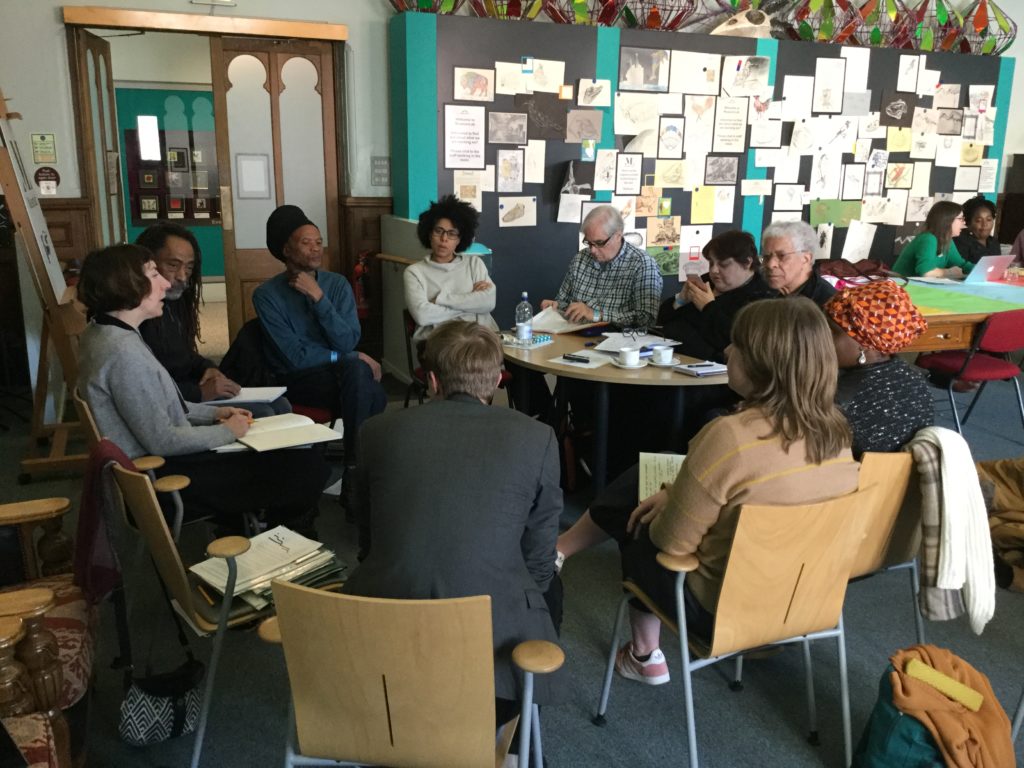
RPMT has been working in partnership on the Making African Connections project, funded by the Arts and Humanities Research Council and led by the University of Sussex. The project looks at historic African collections held in Sussex and Kent museums in the context of calls to ‘decolonise’ museums.
The project has given us the opportunity to work with the Khama III Memorial Museum in Serowe, Botswana, to research and provide wider access to a collection of objects housed at Brighton Museum & Art Gallery. Many of these objects were collected by a Christian missionary during the period when Botswana was a protectorate of the British Empire. We have worked with partners including colleagues at the Khama III Memorial Museum, Sussex-based curator and activist Tshepo Skwambane, and members of Brighton & Hove Black History Project to research the collection.
Tshepo Skwambane talks about how he got involved in the project:
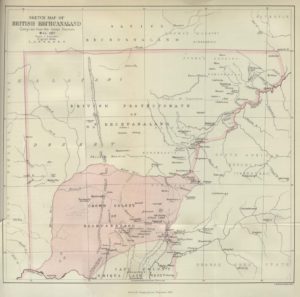
The History of the Collection
Most of the objects from Botswana in Brighton Museum’s collection were collected in the 1890s by Reverend William Charles Willoughby in what was then the Bechuanaland Protectorate. It is now the Republic of Botswana, having gained independence from Britain in 1966. Willoughby loaned a collection of around 200 objects to Brighton Museum in 1899 during a visit home to the UK. The loan was converted into a donation in 1936, shortly before Willoughby’s death. Although the project was originally focused on Willoughby’s collection, the Museum also has several other objects from Botswana, donated by different people at different times. The team also researched these collections.

Who was Willoughby and what were his connections to Brighton and Botswana?
Willoughby was the pastor at Union Street Church, Brighton from 1889-92 (the building is now The Font pub). From 1893 to 1898 he worked for the London Missionary Society in Bechuanaland, living in Old Palapye, the capital of the Bamangwato people. Willoughby also acted as secretary for Khama III, the chief of the Bamangwato. After 1903 he moved with Khama and the Bamangwato people to the new capital of Serowe. This is the location of the Khama III Memorial Museum.
What sort of things are in the collection?
Willoughby collected objects during the period he was living in Palapye. The late 19th century was a period of social and technological change in Southern Africa. The objects in the collection represent a snapshot of changes and adaptations made by people living in the area as they navigated new social, cultural and political conditions. The collection includes leatherwork, metalwork, beaded accessories, weapons and domestic items such as wooden spoons and baskets.

What makes this collection significant?
The latter half of the 19th century was a significant period in the history of Botswana, and of the British Empire. The British imperialist Cecil Rhodes was seeking to expand the territory held by his British South Africa Company. His aim was to build a railway line from ‘Cape to Cairo’ which would ensure the British Empire held influence and power across the length of the African continent.
Several Tswana diKgosi (chiefs) resisted Rhodes. They met and agreed that three diKgosi, Khama III, Sebele I and Bathoen I, would act as representatives for the region. In 1895 the chiefs visited England to petition Queen Victoria to protect their territory from Rhodes. Willoughby facilitated this trip, which involved a tour of cities including Brighton to drum up support for their cause. The visit was ultimately successful and led to the north of Bechuanaland becoming a protectorate, rather than a colony of the British Empire or under the control of the British South Africa Company.

Project Activities
Project work began in 2018 and will be completed in 2021. During this time we have embarked on many different activities and events as part of this project, such as reciprocal research trips to collections in the UK and in Africa, international loan preparations, object conservation and public events.
In February 2019, the project partners met for the first time at Brighton Museum. In attendance were representatives from museums from Botswana, Namibia and Sudan, cultural specialists representing the three countries and diaspora in the UK, the Powell-Cotton Museum, the Royal Engineers Museum, the University of Sussex and the project advisory board.
While in Brighton, the Botswana partners spent time examining the objects. The Botswana and RPMT teams explored the collection and archive material together and shared knowledge.
Object Photography
202 objects from RPMT’s collection were professionally photographed. The high-resolution of these images means that objects can be examined closely, enabling further research. The images will feature in a printed project catalogue being compiled by the Botswana partners, providing access to the objects to people in Botswana. Details of all of the objects, including high-resolution open-access images, can be found on the Making African Connections digital archive site.
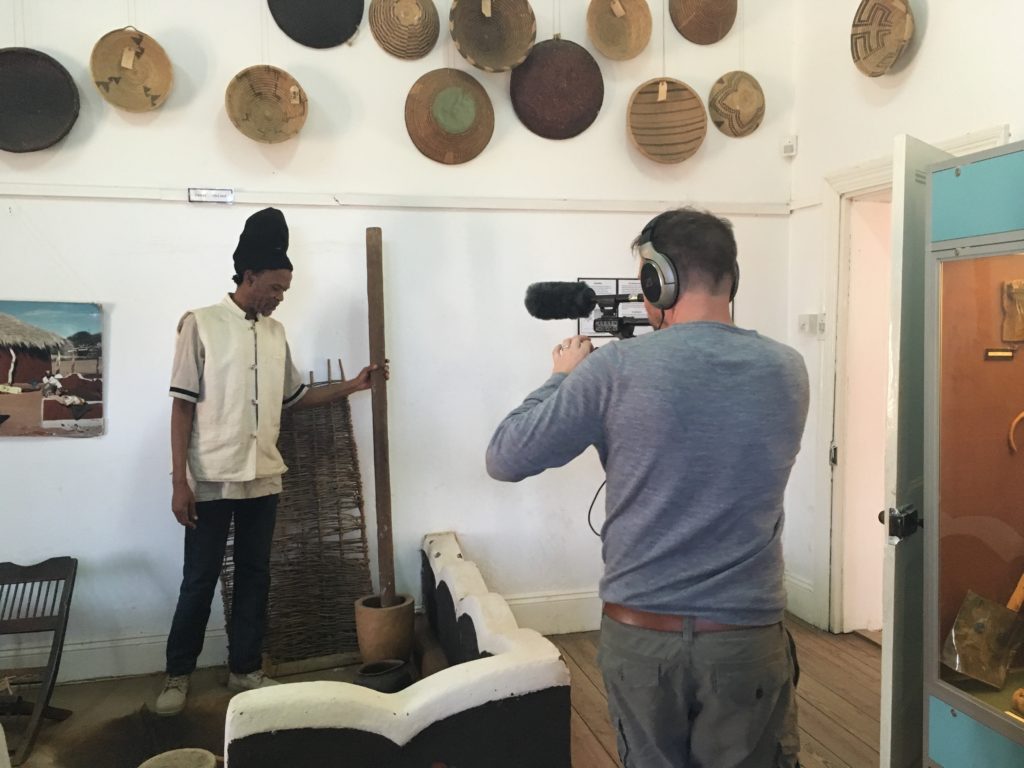
Research Trip to Botswana
In August 2019, four members of the Brighton Museum team visited partners in Serowe, home of the Khama III Memorial Museum, and the capital city Gaborone, where the National Museum of Botswana is based.
During the trip the partners explored objects and shared knowledge about the collections based in the UK and in the Khama Museum. The two museum teams worked together to prepare for the loan of RPMT objects to the Khama Museum: organising environmental monitoring, an assessment of the premises, gallery and display cases, creating a facility report and loan agreement and planning for the display, object packing and storage.
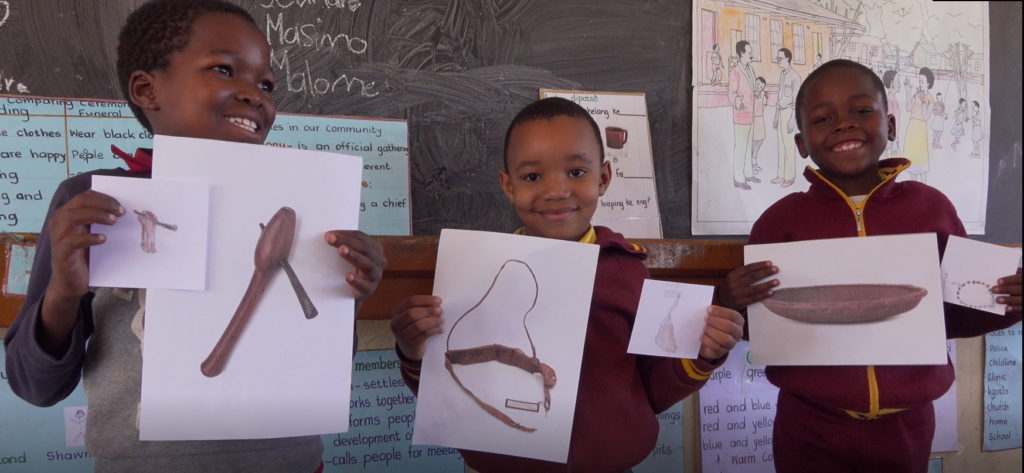
The partners filmed interviews and craft demonstrations with a number of creative practitioners in Serowe, and conducted an interview with Tshupo Ntono, an elder who lives in the nearby Tswapong Hills. The team visited the Khama Memorial School in Serowe to meet Class 2A and introduce them to the Botswana collection. The children examined photographs and drew pictures of the objects.
Research continued in Gaborone where the team conducted interviews with creative practitioners at the Thapong Arts Centre and purchased contemporary objects to complement the historic collection at Brighton.
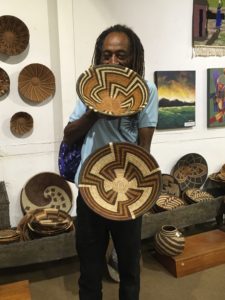
Loan preparation at Brighton Museum
Meanwhile in Brighton, staff worked to prepare objects in the collection to go on loan. Because some of the objects contain materials from animal species that are now endangered, the museum has to apply for licenses to transport them across national borders. Zoology specialist Jack Ashby assisted in identifying animal material.
We worked with Zenzie Tinker Conservation to ensure the large leather skins in the collection were protected and could travel safely. Textile conservator Jamie Robinson wrote a blog about working on the collection.
The effects of the Covid-19 pandemic
The loan of objects to the Khama Memorial Museum was due to take place in summer 2020, with a complementary display at Brighton Museum in autumn 2020. Due to the effects of the pandemic, including travel restrictions, the loan has been postponed. In place of the display at Brighton Museum, we will be publishing a series of blogs exploring the collections and sharing the films which were created with the team in Botswana.


